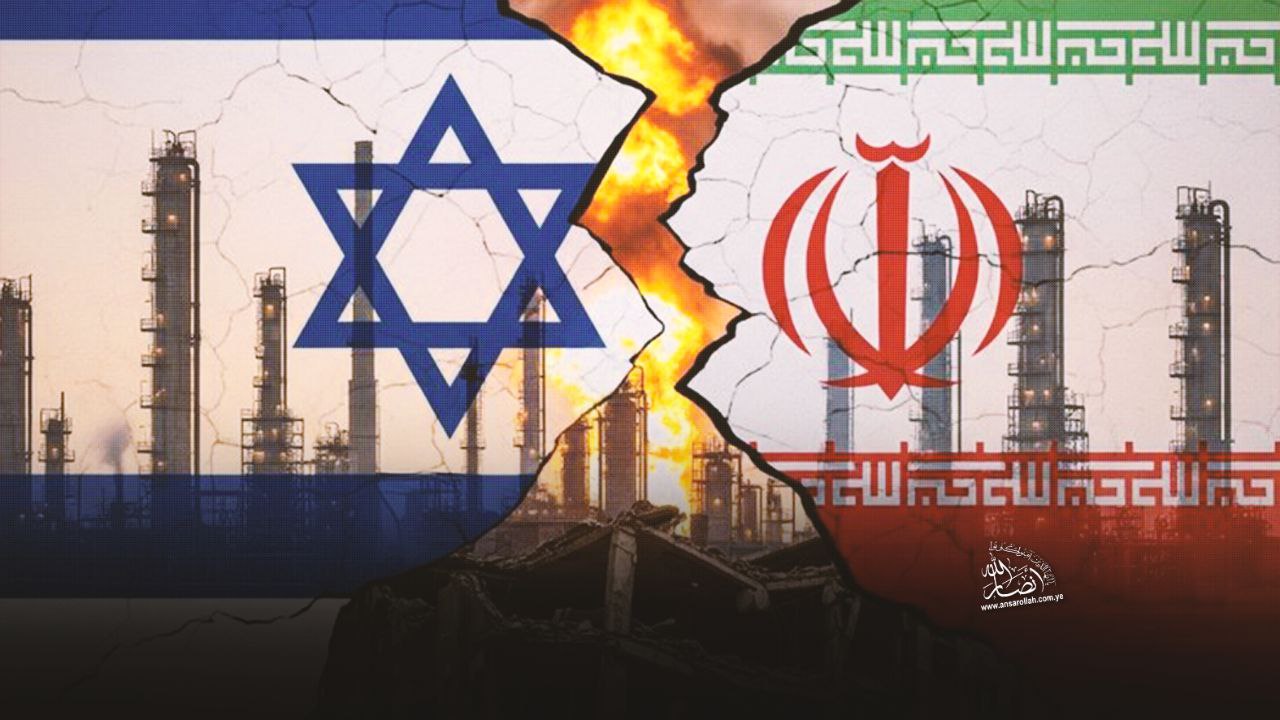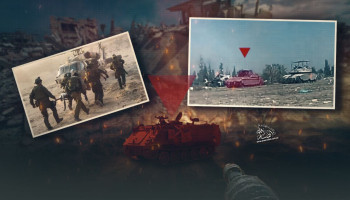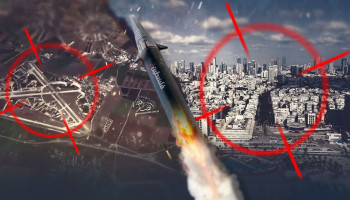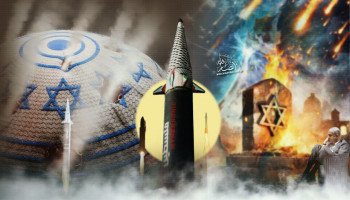Published: Muharram 12, 1447 AH
The twelve-day aggression marked a defining moment in the evolving conflict between Iran and the Zionist entity. It exposed deep-seated imbalances in regional dynamics and prompted a major recalibration of strategic doctrines on all sides. More than just a military confrontation, the war functioned as a strategic test for prevailing political and military paradigms across the region. Despite its limited duration, the conflict left a profound impact on how both Iran and the Zionist entity view and execute their strategies.
1. Iran’s Strategy and the Resistance Axis
A. Nuclear Ambiguity and International Cooperation as Deterrence
Iran had long adopted a policy of “nuclear brinkmanship,” increasing its uranium enrichment levels without explicitly pursuing a nuclear weapon. This ambiguity aimed to sow doubt and hesitation among its adversaries. Simultaneously, Iran cooperated extensively with the International Atomic Energy Agency (IAEA), relying on its oversight as a presumed protective shield for its nuclear facilities. This dual approach served both as a negotiation tool and a deterrent to large-scale military action, by increasing the potential costs for any U.S. or Israeli preemptive strike.
B. Asymmetric Deterrence Through Missiles and Drones
Iran invested heavily in missile development and a robust drone program, equipping itself with low-cost, highly effective asymmetric tools to target strategic enemies. Central to this approach was the doctrine of “unity of fronts,” wherein Tehran armed and trained regional allies to create a multi-front network designed to force the Zionist entity to consider the cost of any escalation.
C. Regional De-escalation and Diplomatic Outreach
Under the leadership of the late President Ebrahim Raisi, Iran pursued de-escalation with Gulf states—particularly Saudi Arabia and the UAE—via Chinese-brokered agreements. Omani and Qatari mediation helped cool regional tensions and reduce the likelihood of coordinated Gulf-Israeli action against Iran. At the same time, Tehran made efforts to restore ties with Egypt and Jordan and reopen diplomatic channels.
D. Embrace of Multipolarity
Alongside its regional diplomacy, Iran built strategic partnerships with Russia and China, leveraging the global shift toward multipolarity to counterbalance Western sanctions and secure access to military technology and diplomatic support.
2. The Zionist Enemy’s Strategy and Regional Alliances
A. The Doctrine of Preemptive Strikes
Since its inception, the Zionist entity has relied on the doctrine of preemptive strikes to neutralize perceived existential threats. Against Iran, this has included targeting nuclear scientists and facilities and planning surgical strikes aimed at crippling Tehran’s ability to develop nuclear weapons. The same doctrine underpinned previous Zionist attacks on Iraq’s and Syria’s nuclear programs, as well as operations against Egypt’s air force.
B. Active Deterrence Strategy
The Zionist entity employed assassinations, cyberattacks, covert bombings inside Iran, and frequent airstrikes in Syria and Lebanon (and to a lesser extent Iraq). This approach aimed to keep Iran perpetually on the defensive and to demonstrate its inability to build an equivalent deterrent force.
C. Building Regional Alliances
Through the Abraham Accords with the UAE, Bahrain, and Morocco, the Zionist enemy expanded its intelligence and security network aimed at countering Iran. It also promoted the idea of a U.S.-backed joint regional air defense system.
D. Reliance on the American Security Umbrella
The Zionist entity viewed America as its ultimate security guarantor. Its strategic planning relied heavily on the American military, intelligence, and political backing, particularly in efforts to prevent Iran from acquiring nuclear weapons.
3. Pre-War Regional Power Balance
Before the outbreak of war, the region rested on a fragile balance:
-
The Zionist enemy maintained military and intelligence superiority, backed by American. support.
-
Iran counted on nuclear ambiguity, its missile and drone capabilities, perceived security immunity, and the Resistance Axis—which had weakened in Lebanon, collapsed in Syria, faced political constraints in Iraq, and had been worn down in Gaza.
-
Gulf de-escalation efforts reduced the likelihood of all-out war, but deep-rooted tensions lingered beneath the surface—awaiting a trigger.
1. Transformations in Iranian Strategy
A. Collapse of Nuclear Ambiguity
Zionist and American strikes, assassinations, and intelligence breaches exposed Iran’s nuclear infrastructure and security gaps, weakening the effectiveness of nuclear ambiguity as a deterrent. The failure of IAEA cooperation to offer international protection ignited internal debates in Iran about the feasibility of continuing the brinkmanship policy. Serious consideration is now being given to openly developing a nuclear option—or doing so covertly.
B. Enhanced Missile and Drone Deterrence
The war revealed that Iran’s missile and drone arsenal was its most potent tool for inflicting heavy costs on the Zionist enemy, eventually forcing a ceasefire. Iran is now expected to focus on improving missile accuracy, diversifying warheads, expanding drone production, and transferring these capabilities to its regional allies—as a core pillar of deterrence.
C. Overhaul of Security and Intelligence Networks
Israeli intelligence penetration into Iranian territory was laid bare. Tehran will likely restructure its security apparatus, enhance cyber defenses, enact stricter anti-espionage laws, and invest in domestic cybersecurity—while reducing reliance on foreign technologies like Starlink and other suspect platforms.
D. Rethinking Regional De-escalation
Despite ongoing dialogue with Saudi Arabia and the UAE, the war highlighted the fragility of regional détente. Iran now recognizes that Gulf states could become staging grounds for hostile actions at any time. This necessitates more robust regional deterrence strategies alongside diplomacy, as well as deeper security ties with Russia and China.
E. Revival of the Unity of Fronts Concept
The war reinforced the strategic value of multi-front deterrence and the unity of fronts doctrine. Iran sees its regional allies as critical, with the Yemeni front in the Red Sea gaining special geopolitical significance. Coordination with Hezbollah, Iraq’s Popular Mobilization Forces, and Syrian factions is likely to increase, aiming to rebuild a regional resistance ring capable of encircling both the Zionist entity and American bases.
Tehran now believes that direct aggression came only after its allies were attacked—driving a renewed effort to fortify its regional alliance network.
2. Transformations in Israeli Strategy and Alliances
A. Limitations of the Preemptive Doctrine
While the Zionist enemy succeeded in striking key Iranian nuclear and military targets, it failed to prevent a powerful Iranian retaliation. The war demonstrated that preemptive strikes alone are insufficient to neutralize Iranian deterrent capabilities or bring about regime change—unlike the decisive victories of 1967 or NATO’s intervention in Libya.
B. Erosion of Deterrence
The Zionist entity came under intense, precise missile and drone attacks that penetrated deep into its strategic heartland. Leaked images showed substantial damage, exposing flaws in air defenses and an inability to protect its settler population. The so-called "government" was forced to shut down airspace and evacuate settlers in some areas. These developments triggered internal debates about the preparedness of the Zionist “home front” and its capacity to endure a heavy, multi-front war with Iran—unprecedented since the 1948 Nakba.
C. Increased Reliance on America
Unable to win the war alone, the entity urgently sought direct American military intervention. This reaffirmed the depth of the Israel–U.S. security relationship but also underscored the entity’s diminishing ability to act independently. A sense of confusion now clouds the alliance, especially after the ceasefire deal between Washington and Sanaa in the Red Sea—even as Yemen continues to support Gaza militarily.
D. Fragility of Normalization Alliances
Gulf countries provided intelligence cooperation with the Zionist enemy but issued cautious condemnations of the U.S.-Israeli aggression. The war exposed the limits of the Abraham Accords as functional defense pacts and raised doubts about their ability to deliver real security against Iran. As the U.S. retreats from the region, Israel increasingly sees an Arab-Zionist NATO as a necessary future option.
3. A Rebalanced Regional Order
A. Emergence of Mutual Deterrence
The war ended with a new equilibrium based on mutual deterrence. the Israeli entity, once confident in its ability to inflict major damage on Iran, was unable to prevent a costly Iranian counterattack deep into its occupied territories. This balance will weigh heavily in future decisions about war.
B. Consolidation of Asymmetric Deterrence
The conflict elevated the strategic role of asymmetric weapons—particularly drones and precision missiles—in countering Israeli air superiority. These capabilities are now essential to Iran’s regional deterrent strategy and form the backbone of Yemen’s defense efforts, compensating for its decimated air force.







